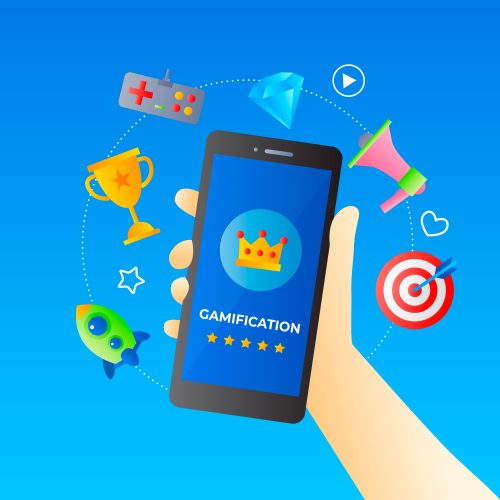
Design by Freepik
Gamification in Marketing: The Game-Changing Strategy for 2025
As digital landscapes evolve, gamification in marketing is emerging as one of the most compelling strategies in marketing. By integrating game mechanics into marketing campaigns, brands are not only boosting customer engagement but also fostering loyalty and enhancing user experiences. In 2025, gamification is set to redefine how brands connect with their audiences, with innovations in mobile app gamification and interactive ad formats leading the charge. This article explores the rise of gamification in marketing, its impact on engagement, and how brands are leveraging this strategy to stand out in a crowded digital marketplace.
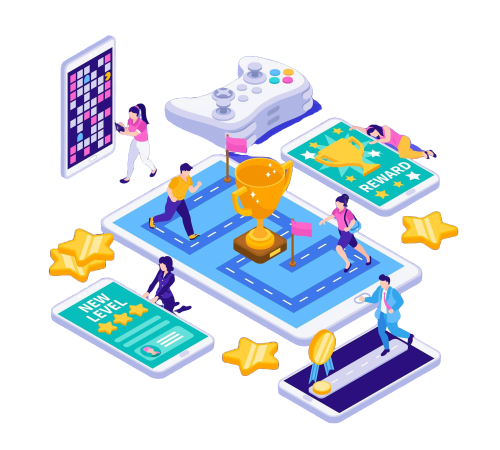
Photo by Freepik
The Rise of Gamification in Marketing
Gamification in marketing is the application of game design elements, such as points, leaderboards, rewards, and challenges, in non-game contexts. This approach taps into intrinsic human motivations like competition, achievement, and reward-seeking behavior. As of 2025, advancements in technology and shifts in consumer preferences have positioned gamification as a powerful tool for marketers to engage digitally savvy audiences.
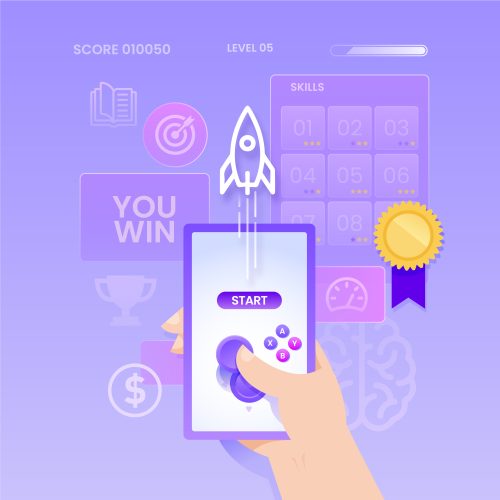
Design by Freepik
Why Gamification In Marketing Works
Psychological Appeal: Games are inherently enjoyable, triggering dopamine releases in the brain. This creates positive associations with the brand or product.
Interactive Experiences: Gamification transforms passive interactions into active engagements, encouraging users to spend more time with the brand.
Data Collection: Gamified experiences often require users to sign up or participate, providing valuable insights into consumer behavior.
Brand Differentiation: In a saturated market, gamification offers a unique way to capture attention and stand out from competitors.
Integrating Gamification into Marketing Campaigns
Brands across industries are adopting gamification to drive engagement, increase conversions, and build lasting customer relationships. From mobile apps to interactive ad formats, the applications of gamification are diverse and impactful.
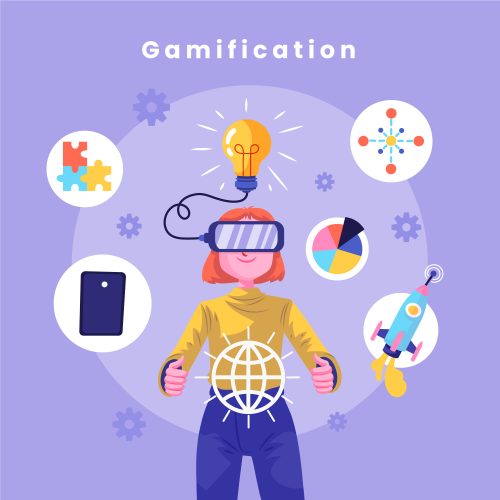
Design by Freepik
Key Features of Mobile App Gamification
Achievement Badges: Encourages users to accomplish specific tasks, fostering a sense of accomplishment.
Progress Tracking: Visual representations of progress keep users motivated.
Timed Challenges: Adds urgency and excitement to the user experience.
1. Mobile App Gamification
Mobile apps has become one of the key features that have become a cornerstone for gamification strategies. With over 6 billion smartphone users worldwide, apps provide a direct and personal platform for engaging customers. Successful examples include:
Fitness Apps: Applications like Nike Run Club use gamification by incorporating challenges, badges, and leaderboards to motivate users.
Retail Apps: Starbucks rewards app offers a gamified experience where users earn stars for purchases, which can be redeemed for free products. In 2025, Starbucks expanded this model to include interactive challenges, such as earning bonus stars for trying new menu items.
Education Apps: Duolingo has revolutionized language learning through gamified elements like streaks, levels, and rewards.
2. Interactive Ad Formats
Interactive advertisements key features applies leverage gamification in marketing to transform traditional ad experiences into engaging activities. These ad formats captivate users, increasing click-through rates and brand recall.
Playable Ads: Playable ads are commonly used in the gaming industry, these ads allow users to play a mini-version of a game before downloading the full app. In 2025, non-gaming brands like LEGO have adopted playable ads to showcase their product offerings interactively.
Augmented Reality (AR) Games: Brands like IKEA use AR gamification to enable users to place virtual furniture in their homes. This immersive experience bridges the gap between online and offline shopping.
Spin-to-Win Campaigns: Interactive ads with spinning wheels offer users a chance to win discounts or prizes, fostering excitement and participation.
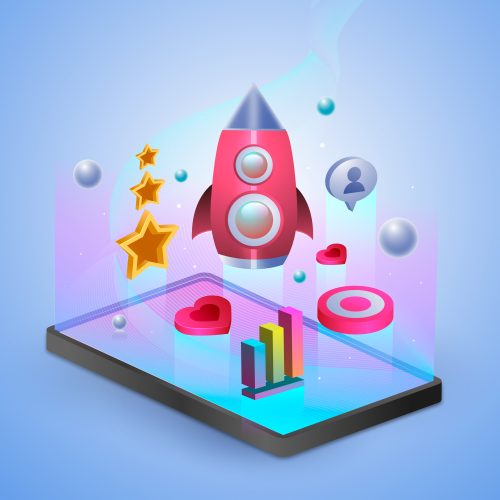
Design by Freepik
Success Stories
McDonald’s Monopoly: A long-standing gamification in marketing campaign where customers collect game pieces for prizes. In 2025, McDonald’s Monopoly integrated AR features into the campaign, allowing customers to scan their game pieces for instant digital rewards.
Coca-Cola’s Christmas Campaign: Coca Cola’s 2025 holiday campaign included a mobile app game where users could earn rewards by completing festive challenges.
Nike’s Virtual Races: Through its app, Nike introduced virtual races that users could join worldwide, earning exclusive merchandise upon completion.
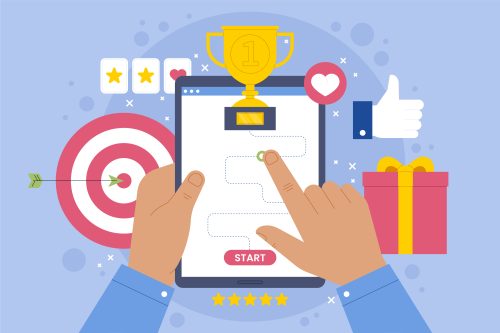
Design by Freepik
The Benefits of Gamification in Marketing
Gamification delivers a plethora of benefits for brands, making it a cornerstone of marketing strategies in 2025.
1. Enhanced Customer Engagement
Gamified experiences capture attention and hold it longer than traditional marketing tactics. Interactive elements keep users invested, leading to higher engagement rates. By offering a dynamic and participatory experience, brands can maintain user interest, ensuring that customers remain involved with the brand over time.
2. Increased Brand Loyalty
Rewarding users for participation fosters a sense of appreciation and loyalty. Gamification in marketing encourages repeat interactions, solidifying long-term relationships. By offering incentives like badges, rewards, or recognition, brands create a deeper emotional connection with their audience, which leads to higher retention rates.
3. Improved Conversion Rates
Gamified ads and campaigns often drive higher conversion rates by creating a sense of urgency and excitement. Incorporating elements such as limited-time offers, point systems, or challenges can nudge consumers toward making quicker purchasing decisions, transforming casual interactions into tangible conversions.
4. Valuable Consumer Insights
Gamification in marketing collects data on user preferences, behavior, and engagement, enabling brands to refine their strategies and offerings. Tracking participation and user choices in real-time allows companies to gain actionable insights, which can lead to more effective and tailored marketing campaigns.
5. Social Sharing and Virality
Gamified content encourages social sharing, amplifying reach and visibility. For example, leaderboards often prompt users to share their achievements, indirectly promoting the brand. This virality helps brands expand their audience organically, as participants share their accomplishments with friends and followers on social media.

Design by Freepik
Challenges and Considerations
While gamification in marketing offers numerous benefits, brands must approach it thoughtfully to avoid pitfalls.
1. Overcomplication
Complex gamified experiences can deter users instead of engaging them. Simplicity and clarity are key. Brands should ensure that the gamification elements are easy to understand and participate in, preventing frustration from potential customers.
2. Maintaining Relevance
Gamified campaigns should align with the brand’s values and audience preferences. Irrelevant games risk alienating customers. The experience should resonate with the target audience, ensuring that the gamified elements contribute to the overall brand story.
3. Sustaining Engagement
Gamified elements must evolve to retain user interest over time. Stagnant experiences can lead to user drop-off. Continuous innovation, new challenges, or changing rewards can keep users coming back, maintaining the freshness of the experience.
4. Privacy Concerns
Data collection through gamification in marketing must comply with privacy regulations like GDPR and CPRA. Transparency and consent are crucial. Brands need to clearly inform users about what data is being collected and how it will be used, ensuring that privacy is respected.
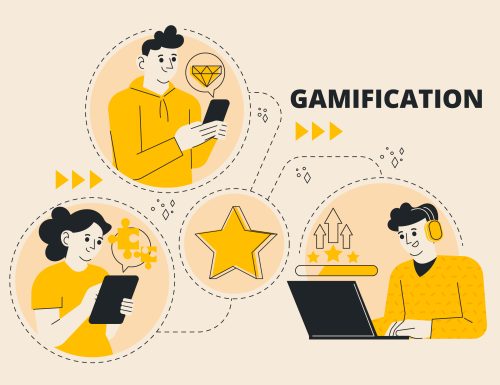
Design by Freepik
The Future of Gamification in Marketing
As technology continues to advance, the potential for gamification in marketing is limitless. In 2025, emerging trends include:
1. AI-Driven Personalization
Artificial intelligence enables hyper-personalized gamified experiences, tailoring challenges and rewards to individual user preferences. By analyzing past behavior and preferences, AI can create uniquely engaging experiences for each user, enhancing participation and satisfaction.
2. Metaverse Integration
Brands are exploring gamification in virtual worlds, offering immersive and interactive experiences in the metaverse. This new frontier allows brands to connect with consumers in entirely novel ways, using gamification to create unique and exciting experiences in a fully digital environment.
3. Blockchain-Based Rewards
Blockchain technology is being used to create secure and transparent reward systems, enhancing trust and engagement. By utilizing cryptocurrencies or NFTs, brands can offer verifiable and tamper-proof rewards that build consumer confidence and encourage ongoing participation.
4. Social and Environmental Impact Games
Brands are integrating gamification in marketing with social causes, encouraging users to participate in campaigns that support sustainability and community development. By rewarding users for taking positive actions, such as donating or volunteering, brands can promote social change while strengthening their customer base.
Conclusion
Gamification in marketing is transforming the digital landscape in 2025, offering innovative ways for brands to connect with audiences. By leveraging mobile app gamification and interactive ad formats, companies are driving engagement, loyalty, and conversions. However, success lies in thoughtful execution, ensuring that gamified experiences are simple, relevant, and aligned with brand values. As technology evolves, gamification in marketing will continue to be a game-changer in the world of marketing, setting the stage for deeper customer connections and unparalleled brand experiences.
